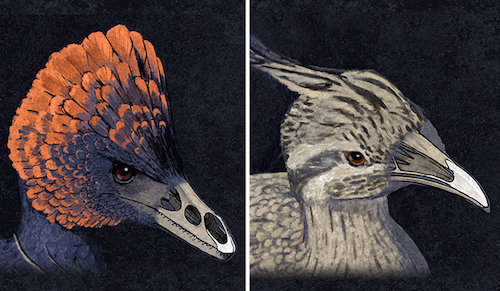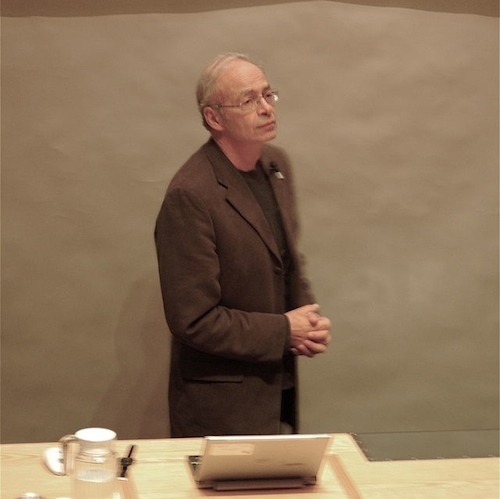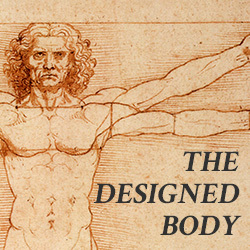Discovery Institute's Blog, page 162
May 14, 2015
Dutch Move Toward Family-Assisted Suicide

Any media story about Dutch euthanasia is generally accompanied by the blithe and false assurance of medicalized killing being governed by "strict guidelines." What a joke, given that doctors kill disabled babies in their cribs, the elderly "tired of life," and the mentally ill, along with the dying and disabled.
One of the guidelines that has actually been enforced is the requirement that doctors do the deed and be present for the homicide/suicide.
But euthanasia activists always want more...
Probabilistic Programming and Conservation of Information
 MIT scientists have improved on a new kind of computer language that enables "probabilistic programing," Larry Hardesty writes for MIT News. The new algorithms allow a programmer to write in fifty lines of code what used to take thousands. Hardesty emphasizes that this advance came at a high cost. And interestingly that is just what William Dembski shows in the chapter on "Conservation of Information" in his newest book, Being as Communion.
MIT scientists have improved on a new kind of computer language that enables "probabilistic programing," Larry Hardesty writes for MIT News. The new algorithms allow a programmer to write in fifty lines of code what used to take thousands. Hardesty emphasizes that this advance came at a high cost. And interestingly that is just what William Dembski shows in the chapter on "Conservation of Information" in his newest book, Being as Communion.
Let's say you want to write facial recognition softw...
May 13, 2015
Scientists Dispute Claims of Converting Bird Beaks Into Dinosaur Snouts

Carl Zimmer in the New York Times reports some provocative-sounding news under an attention-grabbing headline: "Reverse Engineering Birds' Beaks into Dinosaur Bones." Zimmer asserts: "In a study published in the journal Evolution, they report that they have found a way to turn the beaks of chicken embryos back into dinosaur-like snouts." That would be significant, if true.
But commenting on the same journal article, Nature tells a different story. Bhart-Anjan Bhullar, one of the main scienti...
May 12, 2015
Ethicist Peter Singer Says Don't Pay to Treat Disabled Babies

Peter Singer is a bigot. Rather than believing in universal human equality, he would invidiously measure the capacities of human beings to determine whether they are "persons."
Those with insufficient capacities are to be deemed human "non-persons," of lesser moral value, and hence, potentially subject to both killing and objectification for harvesting, medical experimentation, etc.
He also supports health care rationing based on quality of life. This blatant medical discrimination would vic...
A Design-Theorist's Brief Guide to Rupert Sheldrake
I first encountered Rupert Sheldrake through the 1993 PBS documentary A Glorious Accident. He was featured in that documentary along with Oliver Sacks, Daniel Dennett, Stephen Jay Gould, Freeman Dyson, and Stephen Toulmin. I found Sheldrake engaging, insightful, and congenial. I hoped one day to correspond with him.
He and I have now been in touch for over a decade. I've read some of his work and he has read some of mine. He even provided an endorsement for my most recent book, Being as Com...
The Deeper Issues of the Worm Video Debate: Ursula Goodenough's Hypothesis
In response to the Discovery Institute video "How to Build a Worm," distinguished evolutionary biologist Ursula Goodenough at Washington University has proposed a solution to the puzzle we raise. Her solution fails, but its failure is instructive, because it reinforces the main point of the video: Whatever brought the process of animal development into existence must have been a cause with foresight.
I met Ursula Goodenough in February 2006, when she, Michael Ruse, and I participated in a sy...
May 11, 2015
Thomas Nagel's Evolutionary Critique, on London Theatrical Stage?

It seems so from what I read about the new Tom Stoppard play The Hard Problem, now at London's National Theatre, which dramatizes a familiar clash of ideas in the person of a God-believing psychology undergrad student, Hilary, and her Dawkins-like academic supervisor, Spike, who's also her lover. Thomas Nagel was evidently an influence on Stoppard, particular Nagel's presentation of the challenge posed by consciousness to evolutionary materialism.
The American Euthanasia Movement Is Running a Political Con Game

Once a society accepts killing as an answer to human suffering, the caste of killables never stops expanding. Thus, in the Netherlands and Belgium, doctors not only euthanize the terminally ill, but also the elderly "tired of life," the disabled, and the mentally ill.
American advocates respond to these facts on the ground -- not a slippery slope argument -- by arguing that we are different here. After all, they note, those things are not happening in Oregon.
To which I always say, "Not yet....
Understanding Cardiovascular Function: How Water Stays Within the Circulation

Editor's note : Physicians have a special place among the thinkers who have elaborated the argument for intelligent design. Perhaps that's because, more than evolutionary biologists, they are familiar with the challenges of maintaining a functioning complex system, the human body. With that in mind, Evolution News & Views is delighted to present this series, "The Designed Body." Dr. Glicksman practices palliative medicine for a hospice organization.
 Once oxygen (from the lungs) and salt, gluc...
Once oxygen (from the lungs) and salt, gluc...
Theory of Convergent Evolution Analyzed
The knifefish, rather than having several fins like a trout, has one long "ribbon fin" that undulates along the length of its body. Studies of its motion reveal that it uses the optimal wavelength to get the most forward thrust, stability, and maneuverability out of its investment of energy. But the knifefish is not alone: the same optimal design can be found in cuttlefish (cephalopods), rays (cartilaginous fish), certain flatworms, and other bony fish that are evolutionarily unrelated. In f...
Discovery Institute's Blog
- Discovery Institute's profile
- 15 followers




